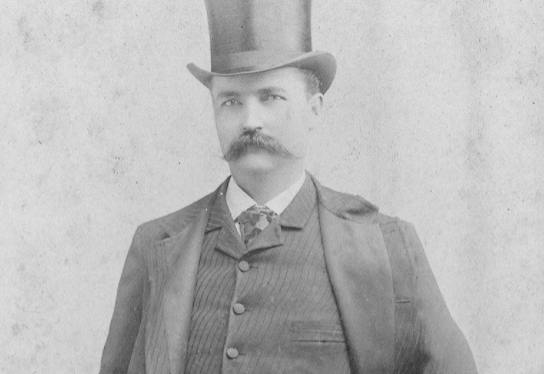Telling the History of Claremore…one story at a time
The formal education of the Cherokee people began with the invention of their alphabet by Sequoyah in 1821. The Bible and newspapers were published in their own language, and illiteracy was practically unknown among the Cherokees.
Before the removal of the Cherokees to Oklahoma, better known as the Trail of Tears, the original schools were established in Georgia, Tennessee, and North Carolina by the Presbyterians, Moravian and Baptist missionaries at the beginning of the 19th Century. Free tuition for the Indians was furnished with each mission. When they were moved to this area, many of the teachers and religious workers came with them. There may not have been any schools for the Cherokees had it not been for the missionary societies. The council began to realize the good results of these schools and appropriated funds to construct new buildings. Education advanced rapidly until the Civil War.
The war brought about the closing of the schools, and the buildings were destroyed or badly damaged. When the Cherokees returned to this area, they started the task of rebuilding their schools. Several important institutions had been established, for they realized the lasting effect education was to their people. A male and female seminary was built near Tahlequah, which were closed at the outbreak of the Civil War. The buildings were occupied by soldiers at various times from each of the armies. The Cherokees repaired and reopened the schools, and the pupils made great progress in education.
In 1919, the female seminary was sold to the State and became the Northeastern State Teachers’ College. Fire destroyed the male seminary, and the grounds were sold for farming.
WEST POINT SCHOOL
Probably the first school established in what is now Rogers County was West Point, and it was located about two miles southeast of Claremore. In 1869, the citizen of the neighborhood built the school house of logs and was 16 by 20 feet in size. Four times a day, two students were sent for a bucket of water a quarter a mile away. Some of the students rode their horses eight miles to get to school. Later a new frame West Point school was built, east of West Point Spring and was also used for church.
Some of the students’ names will sound familiar to you: Chambers, Starr, Schrimshere, Ross, Gunter, Fry, Ramsey, Coker, and Rogers. The children of Clem Rogers stayed with their cousins, the Schrimsheres during the week and went home for the weekend.
OOWALA SCHOOL
The story of the Oowala School and community is in reality the life of the Lipe family who had much to do with the education of the Cherokee people. Oliver Lipe was a white man who was given the name “Oowala” by the Cherokee people. In 1839, he had married Katherine Gunter, a half-blood Cherokee girl that he had met in Indian Territory. They became the parents of DeWitt Clinton (called Major) and Clark Casper (known as Jake.) After the Civil War, they settled near Claremore Mound after the Osage Indians were removed. This would be northwest of Claremore.
The Oowala community was named after Major Lipe, being a man of culture and high ideals. He settled in the community in 1872 and established the first store, post office, and the Oowala School. In 1881, he provided a one-room log building, which had been a granary. A new modern school was built in 1884 with a storm cellar for they had a fear of tornadoes. Drinking water was carried in buckets from the well at the store that was one-fourth mile west.
Major Lipe’s store and the school was the center of activity in the Cooweescoowee district. The families in the Oowala community brought their charm and culture from the old south with them.
CLAREMORE’S FIRST SCHOOL
Four miles northeast of Claremore was Kephart Springs Courthouse for the Cherokee Indian government for this district. It was originally called Henry Springs, but became known as the Kephart Springs after the Kepharts established their boarding house near there in 1878. The courthouse was moved to Claremore Station about 1890. The first school ever taught in Claremore was held in the Kephart Springs Courthouse, which had been moved to the new village.




